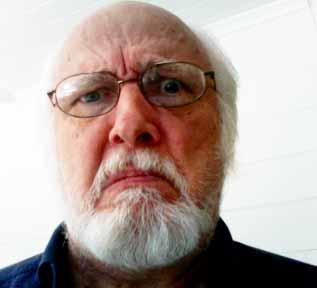
Walter Benjamin is an exemplary figure for heuretics and the invention of an electrate apparatus. His work gathers together most of the major trajectories of apparatus shift, preparing the ground for further invention. His first service, of course, is the Arcades project, collecting an archive of Paris, designated "capital of the nineteenth century," with Baudelaire and the bohemian vanguard at its center. Paris is the Athens of electracy, with the cabarets of Montmartre functioning as the "Academies" in which were created the logics of an image metaphysics. His description and practice of the "dialectical image" is a major step in the creation of electrate logic, integrating three primary strands of the new logos: philosophy, film, avant-garde arts.
This Forum provides an outline of the intellectual disciplinary context within which our heuretics is performed. The goal is to undertake ourselves and promote for colleagues the invention of an electrate metaphysics. An exemplary point of entry into this project is Walter Benjamin's "On the program of the coming philosophy," an essay published early in his career. Benjamin articulates a task (tasks) for the approaching or future philosophy, a philosophy to come (Zu-kunft, a-venir) that Giorgio Agamben takes up in turn, and that, more implicitly, motivates important strands of French poststructuralism. What makes this task relevant to electracy is its ambition to reintegrate into a unified mode the kinds of thought, knowledge, and experience specific to each of the three apparati: religion (orality), science (literacy), and whatever is emerging in electracy. The task (in brief) is to invent a mode of thought integrating theology, science, and aesthetics. This ambition is central to apparatus theory, in that electracy does not replace the other two apparati, but supplements them. The task of the coming metaphysics is to support a cooperation and correlation among the three institutional modalities.
Benjamin's point of departure is Kant's three critiques, acknowledging Kant's prescience in introducing a third faculty, granting equal status to imagination (taste, aesthetic judgment) with pure and practical reason (reason and understanding). Knowledge is said to have two sides. The first side concerns certitude of knowledge of what is lasting, permanent, present. We recognize this first knowledge as the kind featured in Aristotle and the Greek decision to focus reality in terms of actuality--that which is necessary. This focus promoted empirical science, reaching completion (its telos) in our present techno-utilitarian epoch. The other side of knowledge (admitted but neglected in the tradition as illusory) is experience of the ephemeral. This latter kind designates the everyday modality that Heidegger also foregrounded as relevant to the other beginning for a new metaphysics. It is worth citing Baudelaire (protagonist of Benjamin's Arcades project) to clarify ephemerality as the primary feature differentiating modernity from previous epochs, with Fashion as its institutional vehicle. Baudelaire's new philosopher, the figure attuned to the contemporary, is the dandy/flaneur, wandering or drifting in the industrialized city.
He is looking for that indefinable something we may be allowed to call "modernity," for want of a better term to express the idea in question. The aim for him is to extract from fashion the poetry that resides in its historical envelope, to distil the eternal from the transitory. If we cast our eye over our exhibitions of modern pictures, we shall be struck by the tendency of our artists to clothe all manner of subjects in the dress of the past. . . . This is evidently sheer laziness; for it is much more convenient to state roundly that everything is hopelessly ugly in the dress of a period than to apply oneself to the task of extracting the mysterious beauty that may be hidden there, however small or light it may be. Modernity is the transient, the fleeting, the contingent; it is one half of art, the other being the eternal and the immovable. (Baudelaire, "The Painter of Modern Life").

